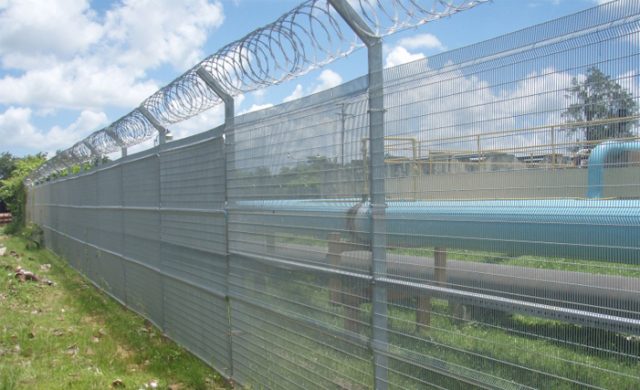Security Perimeter Fence Effectiveness
In today’s world, you might not find a more-primitive security system than the chain-link fence. Long before the concepts of network hacking began well before the invention of the internet. The Chain Link Fence has been around in fact this trusted protection device prevented unwanted visitors from entering on selected parcels of real estate. Over the years more technologically advanced methods of perimeter protection evolved, including video surveillance and card access entrance gates. Each with its own communications infrastructure, and much of that infrastructure consisting of wiring.

Effective as a security protection systems. Today, many highly sensitive entities from Military, Power Plants, Oil and Gas to Prisons are choosing not to replace their fences with cabled security systems, but rather choosing to add cabling—fiber-optic cabling in particular—to their existing perimeter security systems to gain the advantages of modern intrusion detection.
Yet fences did not go the way of the abacus or typewriter in the face of emerging technology. They are still present
How Machine Learning & AI Maximize Security Perimeter Fence Effectiveness
The future is now, and we are living in it. Fiber optic cable is used today for Perimeter Security Fence. “There is a unique phenomenon that occurs. Any movement of the optical fiber, even microscopic movements such as vibrations, changes the way that light is propagated down the core of the fiber. Any movement of the optical fiber causes a change in what is called the speckle pattern. Our detector registers a change in the speckle pattern.
At SVT we employ a sophisticated digital-signal processor that runs many algorithms to determine if a signal is an intruder or environmental background noise, such as wind. There are several calibration parameters that tune to respond correctly to the sensor’s unique application.
Security Video Technology Security Fence Installations
SVT has can protect systems if 100 miles in-perimeter and locate intrusions. We service the U.S. Navy and Army, and the Department of Homeland Security.


